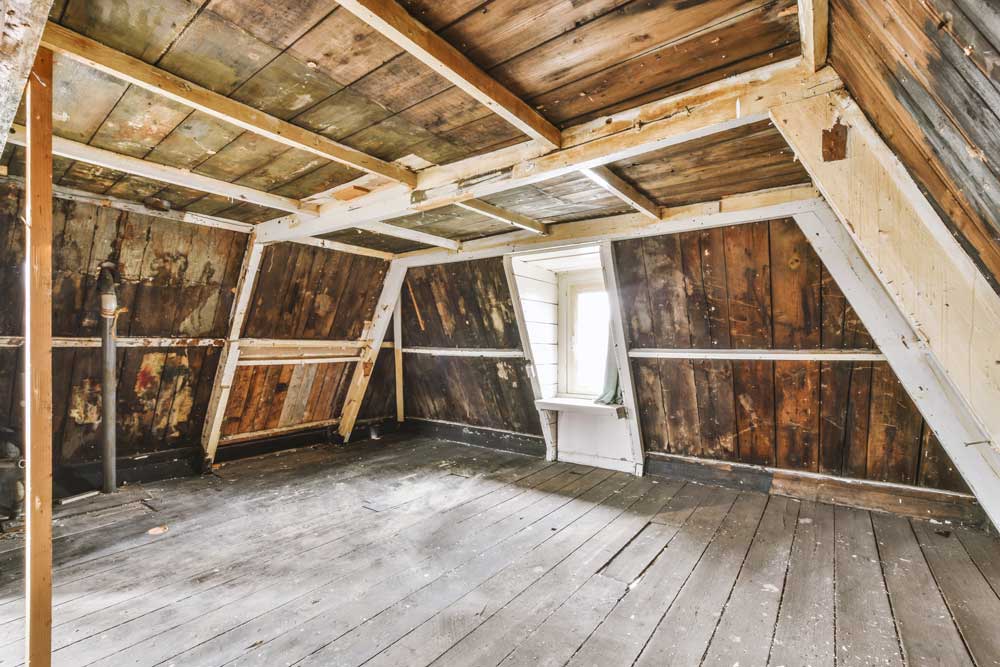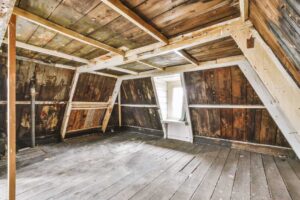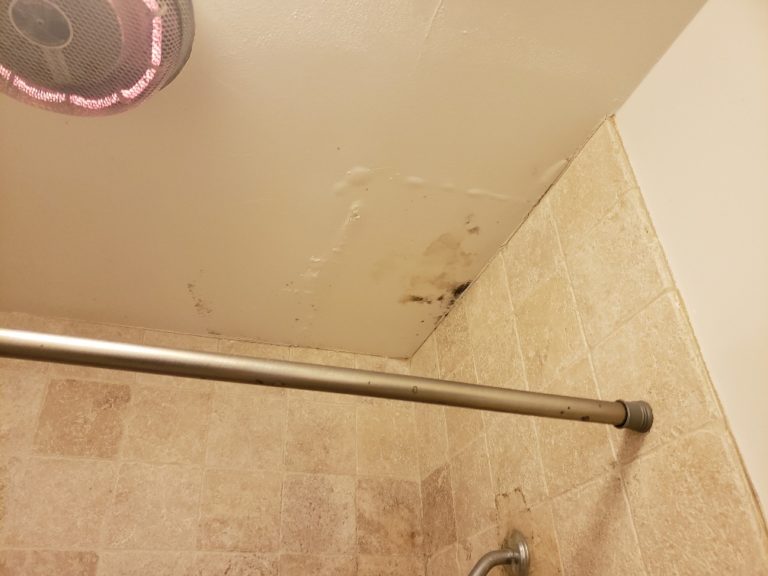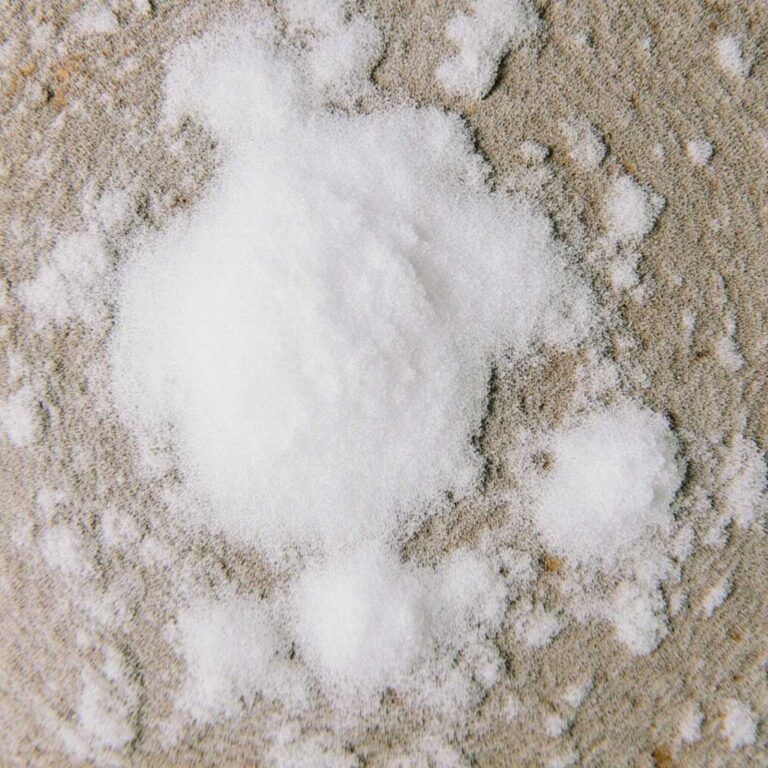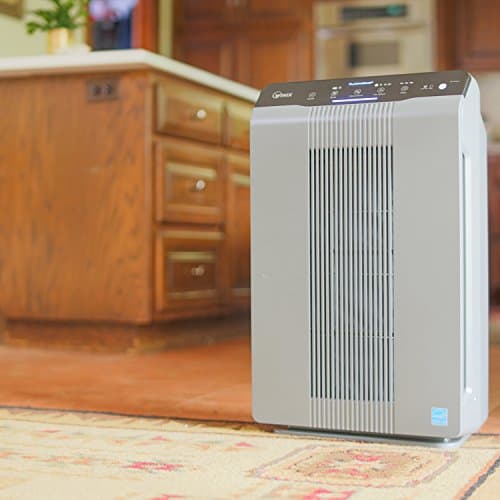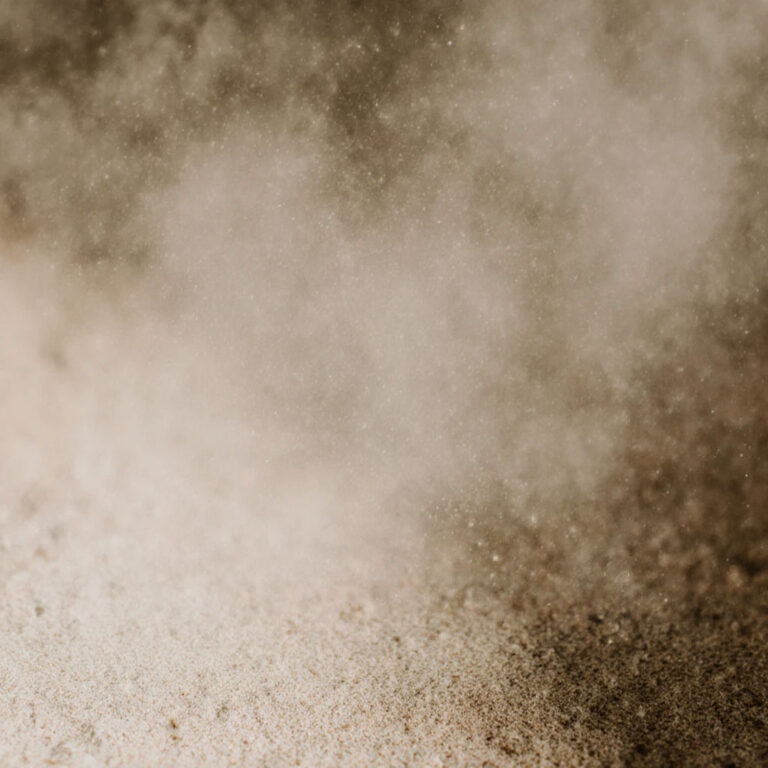If you’ve ever poked your head into the attic and spotted dark streaks or fuzzy patches, you might be dealing with mold in attic spaces. This is a problem many homeowners overlook until it becomes serious.
While it might seem harmless, especially if it’s tucked away above your ceiling, attic mold can affect both your health and the structural integrity of your home. Worse still, not all mold is visible or clearly dangerous at first glance. Some forms, like so-called harmless black mold in attic corners, may quietly release spores that impact indoor air quality.
In this guide, we’ll break down what mold in the attic looks like, how it spreads, why it matters, and what you should do if you find it.
What Causes Mold in the Attic?
Before jumping into whether mold in attic spaces is dangerous, it’s important to understand why it shows up in the first place. Mold thrives in warm, damp environments—something attics often unintentionally provide.
Common causes of attic mold include:
- Poor ventilation that traps warm, humid air
- Roof leaks that allow rainwater to seep into wood and insulation
- Bathroom or dryer vents that discharge moist air directly into the attic instead of outside
- Improper insulation that causes condensation to form in colder months
- Blocked soffit or ridge vents that limit airflow
Moisture is almost always the root cause. When combined with organic materials like wood, mold has everything it needs to grow. A small leak or blocked vent may seem minor, but it can result in major mold problems over time.
If the mold is concentrated near rafters or along the roofline, it may be linked to roofing issues. Learn more in our guide on how roofing and gutter problems cause mold.
What Does Attic Mold Look Like?
Spotting mold in attic spaces isn’t always straightforward. It can appear in different forms, making it difficult to tell whether it’s truly dangerous or just cosmetic discoloration.
Common types of attic mold include:
- Black mold – Often dark green or black in color, it may appear as streaks, dots, or patches. When people mention black mold in attic, they’re usually referring to Stachybotrys chartarum, which can release harmful mycotoxins.
- White mold – This variety can resemble dust or a chalky film. White mold in attic corners is often mistaken for insulation residue or harmless buildup, but it can still damage wood and spread.
- Harmless black mold in attic? Not quite. Even if it doesn’t appear toxic, any mold that grows indoors should be treated with caution and addressed promptly.
You may also notice:
- A musty or earthy smell
- Wood discoloration or darkened plywood
- Fuzzy or velvety texture on surfaces
- Mold growing along nails, insulation, or roof sheathing
For a complete visual and inspection checklist, visit The Mold Checklist.
Is Mold in the Attic Dangerous to Your Health or Home?
Many homeowners assume that mold in attic spaces is no big deal—out of sight, out of mind. But even when hidden away, mold can pose real health and structural risks.
Health Risks
Some types of mold, especially black mold in attic areas, can release spores that affect indoor air quality. These spores may enter your living space through vents, air leaks, or HVAC systems. Common health symptoms linked to mold exposure include:
- Nasal congestion
- Coughing or wheezing
- Eye and skin irritation
- Worsening asthma or allergic reactions
According to the EPA, mold exposure may cause serious respiratory problems, particularly in people with asthma, immune suppression, or chronic lung conditions.
Even white mold in attic corners, which may appear less threatening, can affect air quality over time and should not be ignored.
Structural Risks
Mold doesn’t just float around in the air—it grows by breaking down organic material. Left untreated, it can:
- Weaken roof sheathing and wooden supports
- Destroy insulation and reduce energy efficiency
- Lead to costly repairs and remediation efforts
If you’ve already noticed visible growth, it’s time to think about attic mold remediation or at least professional inspection.
Can Mold in the Attic Spread to Living Areas?
Yes, mold in attic spaces can absolutely make its way into the rest of your home. While it might seem isolated above your ceiling, mold spores are lightweight and easily airborne.
How it spreads:
- Through air leaks around ceiling fixtures, vents, or attic hatches
- Via HVAC systems that pull air from the attic or circulate it throughout the home
- On insulation or wood that has been disturbed and moved during maintenance or remodeling
Once airborne, spores can settle and grow in other moisture-prone areas—walls, crawlspaces, or even behind drywall. This makes mold remediation in attic spaces essential before the problem spreads further.
Early mold growth can be subtle. It may take only 24 to 48 hours for spores to start colonizing when moisture is present. Learn more in our article on how long mold takes to grow.
How to Know if You Have Mold in the Attic
Identifying mold in attic spaces early can prevent serious damage and reduce the need for costly cleanup. Mold doesn’t always appear in obvious patches, so knowing what to look for is key.
Signs You Might Have Mold in the Attic:
- Musty or earthy smell coming from the ceiling or attic hatch
- Dark staining or discoloration on wood, insulation, or rafters
- Fuzzy or powdery textures on attic surfaces
- Visible water damage or condensation near rooflines or vents
- Rusty nails or damp insulation, which may signal high humidity
Helpful Tools for Detection:
- Flashlight or headlamp
- Moisture meter (water leak detectors)
- Protective gloves and mask
- Digital hygrometer (to measure humidity)
Early detection can make attic mold treatment easier and more affordable—and reduce the risk of mold spreading to living areas.
Even if you don’t see mold directly, moisture is a major red flag. Consider using a water leak detector to identify hidden leaks or rising humidity levels. Learn more in our guide to Water Leak Detectors.
What to Do If You Find Mold in Your Attic
Discovering mold in attic spaces can be alarming—but what you do next matters just as much as finding it.
Here’s what you should (and shouldn’t) do:
- Don’t disturb it unless you’re wearing protective gear like gloves, goggles, and an N95 mask. Scrubbing or sweeping mold can release spores into the air.
- Avoid using fans or ventilation systems that might blow spores into the rest of the house.
- Take photos of the affected areas. This helps track changes over time and provides documentation if remediation is needed.
- Use moisture meters to check for damp spots nearby.
- Monitor the area regularly, especially after rain or during high humidity seasons.
While small patches might seem manageable, large or persistent growth often requires professional mold remediation in attic areas. Experts can assess moisture sources and determine the safest removal strategy. For more on this, read our [link: attic mold removal guide for cleanup tips and costs].
Final Thoughts: Don’t Let Mold in the Attic Go Unnoticed
It’s easy to ignore what’s happening above your ceiling—but mold in attic spaces can quietly impact your health, damage your home, and spread before you even realize it. From invisible leaks to blocked vents, the causes are often subtle but serious. Whether it’s black mold in attic rafters or a patch of suspicious white growth, early action is your best defense.
Remember, even what looks like harmless black mold in attic corners can lead to larger problems. Regular inspections, moisture control, and staying informed are key to protecting your space.
Frequently Asked Questions About Mold in the Attic
Can mold in the attic go away on its own?
No, mold will not disappear without intervention. As long as moisture and organic materials are present, mold will continue to grow and may spread to other parts of the home.
How much does it cost to remove attic mold?
The mold in attic removal cost depends on the size of the infestation, type of mold, and whether structural repairs are needed. On average, homeowners might spend anywhere from $1,000 to $6,000 for professional remediation.
Is attic mold always visible?
Not always. Mold can grow behind insulation, on the underside of roof decking, or in corners with limited airflow. A musty smell or signs of moisture may be the only clues, making early detection tools like moisture meters essential.
Also Read
Interested in learning more about tackling mold throughout your home? These resources can help:
- How to Remove Mold from Carpet – Learn step-by-step methods to clean mold without damaging your flooring.
- Do Air Purifiers Help with Mold? – Find out what works (and what doesn’t) when it comes to filtering mold spores from indoor air.
- How to Clean Mold off Wood – A complete guide to safely treating mold on wooden surfaces like beams, floors, and furniture.
- How to Get Rid of Musty Smell in Basement – Tips for eliminating that damp, moldy odor lingering below ground level.
- Why You Should Never Expose Your Family to Black Mold – Understand the real risks of black mold in attic and other areas of the home.


